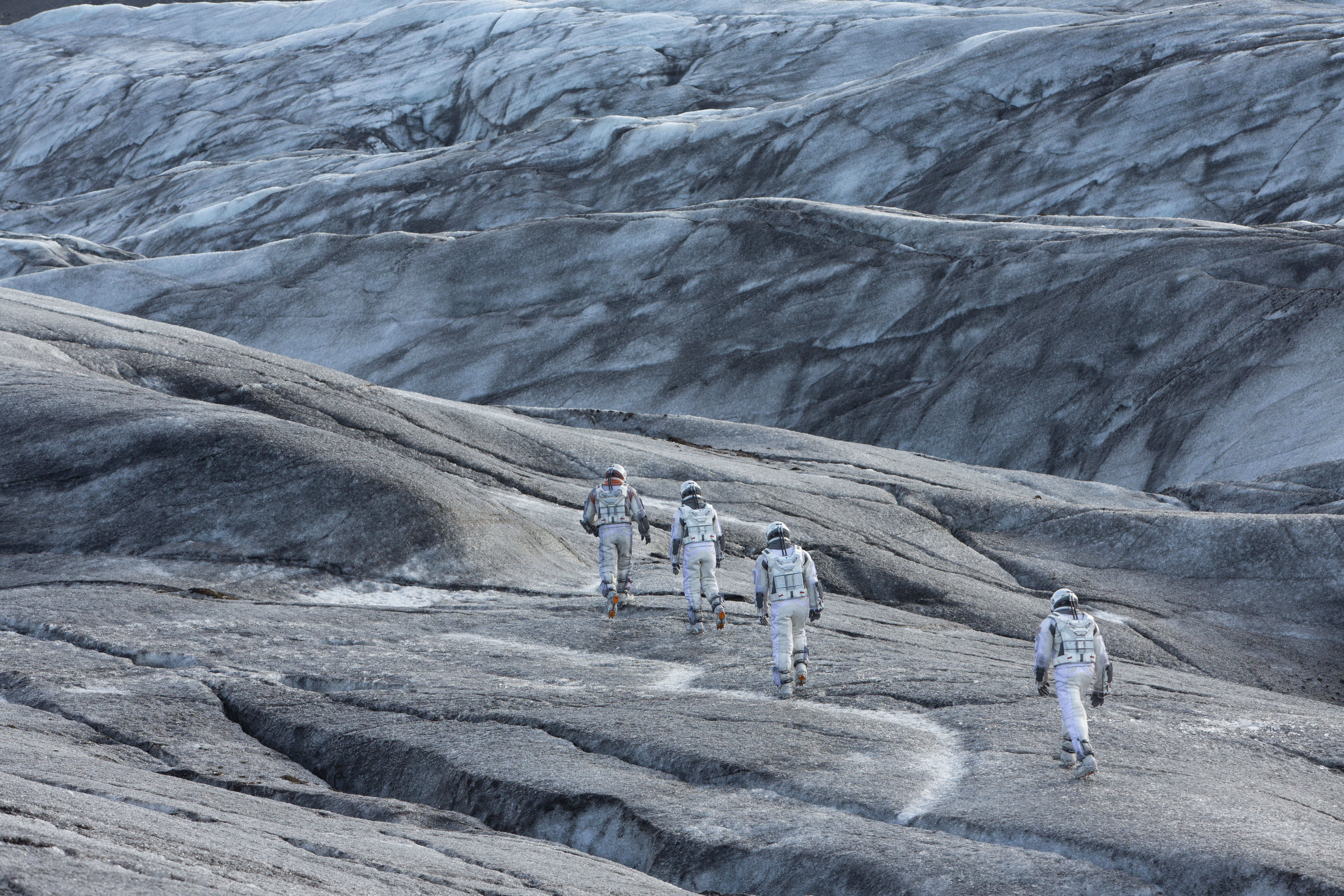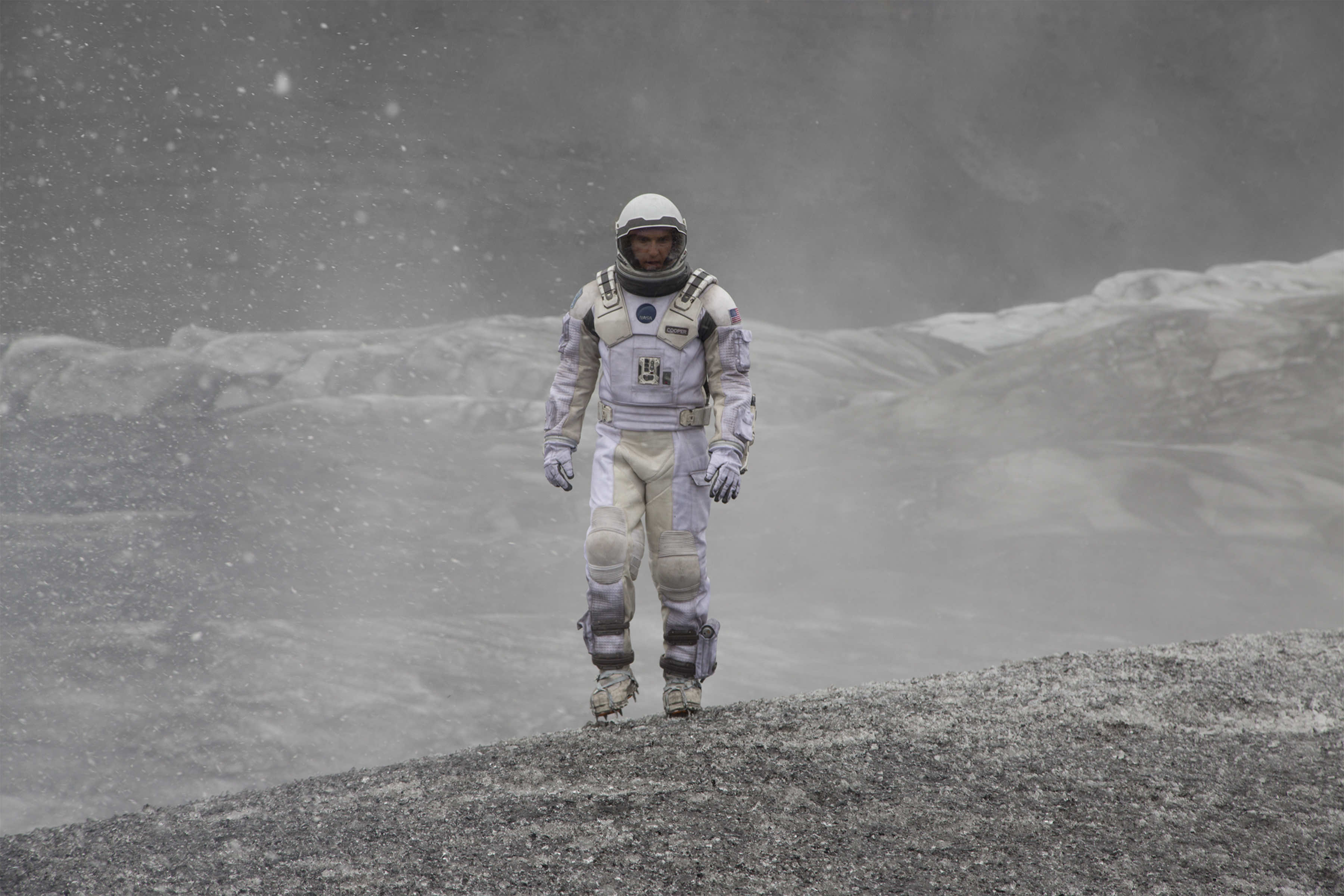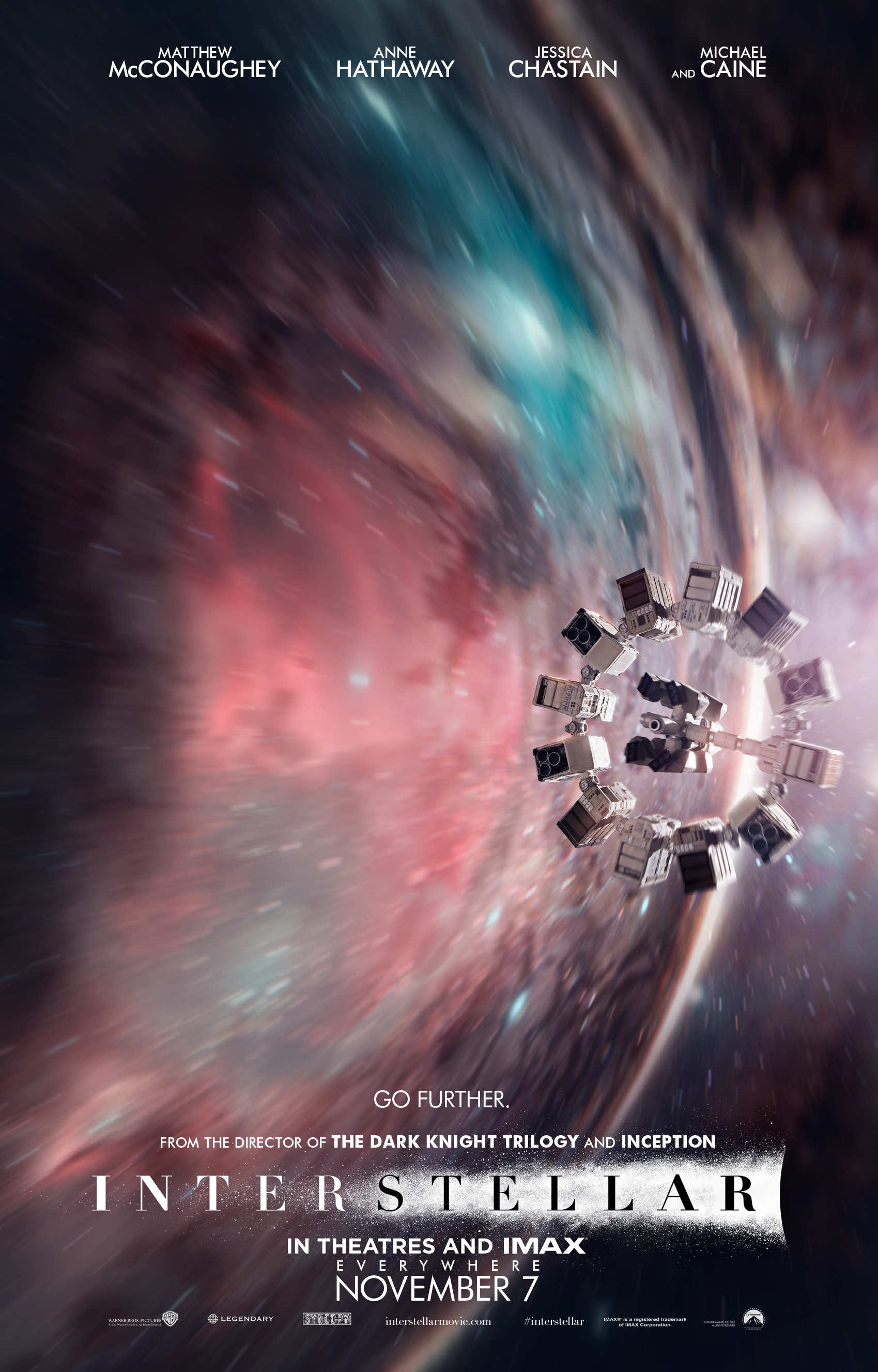 There is no denying one thing about Interstellar: it’s an epic space adventure made for the big screen. It features set pieces that will dazzle and impressive alien landscapes that will enthrall. The effects, which include a near-scale spaceship seemingly tearing through the stratosphere and popping into the silence of space, are unforgettable. The appearance of an intergalactic wormhole that will carry our brave explores to another galaxy against the stark backdrop of what looks like a painted planet Saturn is both surreal yet geeky cool.
There is no denying one thing about Interstellar: it’s an epic space adventure made for the big screen. It features set pieces that will dazzle and impressive alien landscapes that will enthrall. The effects, which include a near-scale spaceship seemingly tearing through the stratosphere and popping into the silence of space, are unforgettable. The appearance of an intergalactic wormhole that will carry our brave explores to another galaxy against the stark backdrop of what looks like a painted planet Saturn is both surreal yet geeky cool.
There is no need spoiling what lies on the other side of the titular crossroads, and I would hate to reveal how director Christopher Nolan presents the theory of the wormhole in not one scene but two that occur at different points of the movie yet are still connected to the moment of the spaceship’s penetration of the portal both narratively and visually. He’s a smart filmmaker, but I feel obliged to warn viewers to lower their expectations.
It will be easy for ticket buyers to understand why plot points were held so secretive ahead of the release of Interstellar once they see the film. It’s a preposterous yet sprawling movie filled with several overwrought pauses in action for lots of tearful emoting or explaining of theoretical astrophysics between sequences of action, and then there’s the ludicrous third act. As opposed to the much more interesting Inception, this film feels clunky, arriving at a trite finale that’s more supernatural than scientific.* Both films share an action-packed climax that unfolds in alternate levels of time and space featuring fast-paced inter-cutting, but one did it much better: Inception. In that film, time felt reinvented like Chinese boxes on a plain. But with Interstellar Nolan pads nearly three hours full of expository theory to inform the viewer with a weird logic that actually disarms anything interesting about the impressive visuals and ideas that occur throughout the film. To end on a note that does not so much defy astrophysics as it does wash its hands of it, devolving into a convoluted idea that feels more desperate to tie up loose ends in a fantastical reach for closure betrays much of what’s impressive about the film: the awe-inspiring visuals.
It’s so ironic that in this near future version of our planet, children are being taught that the Apollo 11 lunar landing in 1969 was staged. We learn this when the film’s hero, Cooper (Matthew McConaughey), 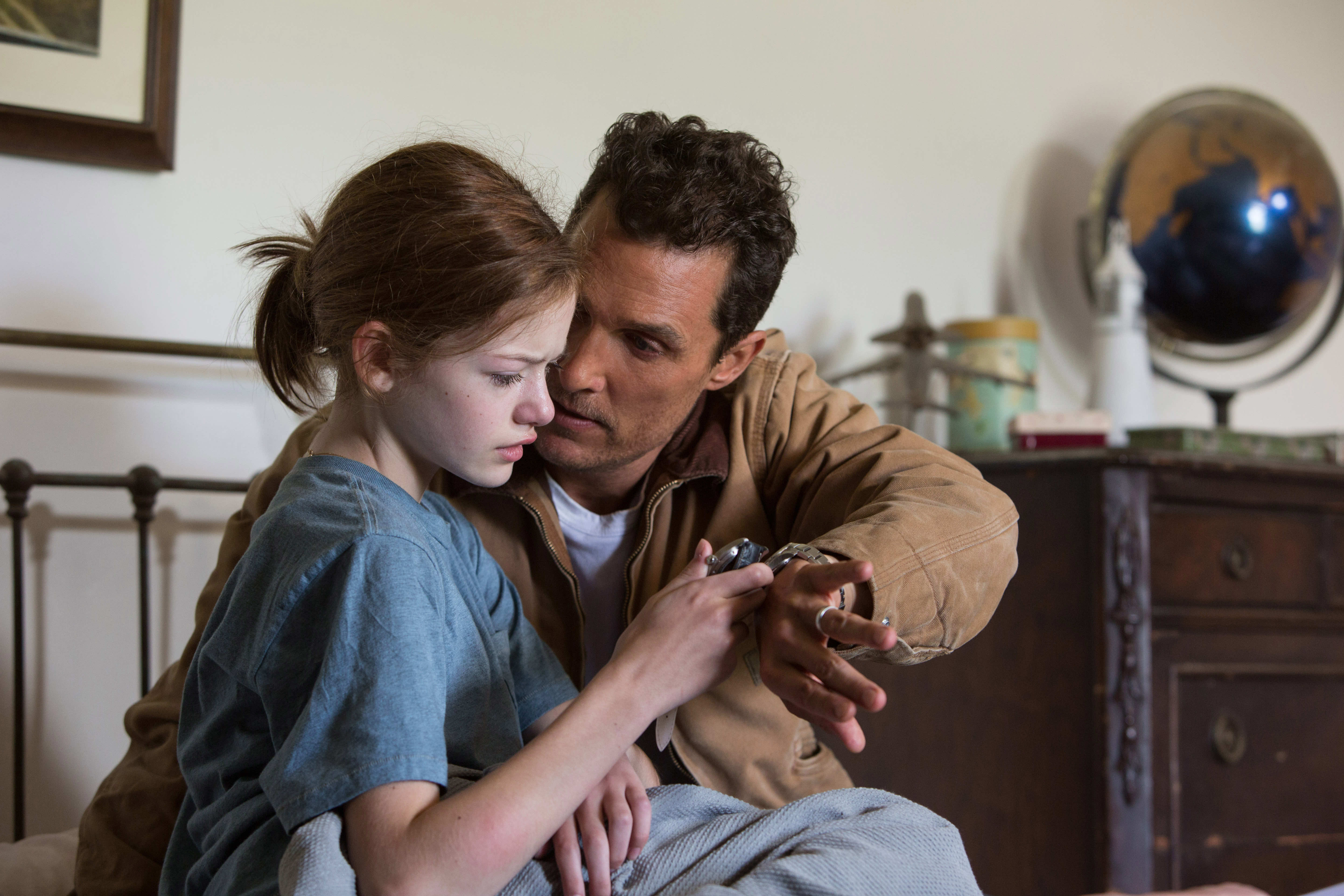 is called to a parent-teacher conference regarding his daughter Murph’s (Mackenzie Foy) defiance to the idea that a conspiracy theory has become a fact. After all, she has a legit, vintage text book her dad had given her, and he was an astronaut for NASA once. But in this dystopian future, NASA has been dismantled and people have more earthly concerns. Mother Earth is revolting against human kind, and people cannot grow corn fast enough to sustain life on a planet overcome by dust storms.
is called to a parent-teacher conference regarding his daughter Murph’s (Mackenzie Foy) defiance to the idea that a conspiracy theory has become a fact. After all, she has a legit, vintage text book her dad had given her, and he was an astronaut for NASA once. But in this dystopian future, NASA has been dismantled and people have more earthly concerns. Mother Earth is revolting against human kind, and people cannot grow corn fast enough to sustain life on a planet overcome by dust storms.
To double the irony, Nolan has made no secret about the influence of 2001: A Space Odyssey, a film that downplayed emotions and exposition to achieve moments of transcendence that are rarely achieved in film. Of course, Nolan also qualified his comments to say he was not trying to match the masterpiece by Stanley Kubrick. I studied the movie for my Master’s thesis (you can read an abridged version of my analysis beginning with this post: How Stanley Kubrick broke the rules of Classical Hollywood cinema and made a better film with ‘2001: A Space Odyssey’: My MA thesis redux – part 1 of 4), and I can tell you, if Nolan would have taken the fundamental notion of presenting a film that relies more on visuals over language, viewers would have come away with a more memorable experience.
By no means did I enter Interstellar expecting a film equivalent to 2001. It would be unfair considering the influence 2001 has had on so many films since its release, not to mention the era when it was released, so many decades ago, and the changes to commercial film since then. What I did expect of Nolan is to place some trust in the power of visual language without weighing it down with characters continuously declaring their feelings tearfully or espousing theoretical knowledge as the narrative bumbles along. Adding to the encumbrance is an operatic, overly present score by the often cheesy Hans Zimmer. So he uses organs, but anyone who has heard the impressionistic work of Philip Glass or even the bombast of early Yes, has heard the instrument used more effectively.
The film pays off when the extraneous noise, like the music and dialogue, are toned down. It’s hard to buy these emo astronauts. Thank goodness they have a pair of robots, voiced by Bill Irwin and Josh Stewart — who look like monoliths with inventive articulation and act like R2-D2 — that are programmed with senses of humor. Then there are even more secondary characters, including a surprise appearance by a famous actor, but none ever feel written with the right amount of sympathy, and too much repetition of how they feel comes across as patronizing to the audience instead of adding dimension to their characters. The most sympathetic performance of all turns out to be that of young Murph. Foy plays a frustrated young woman desperate to be taken seriously but also reaching out for the love she needs from her too-noble-for-his-family’s-good father.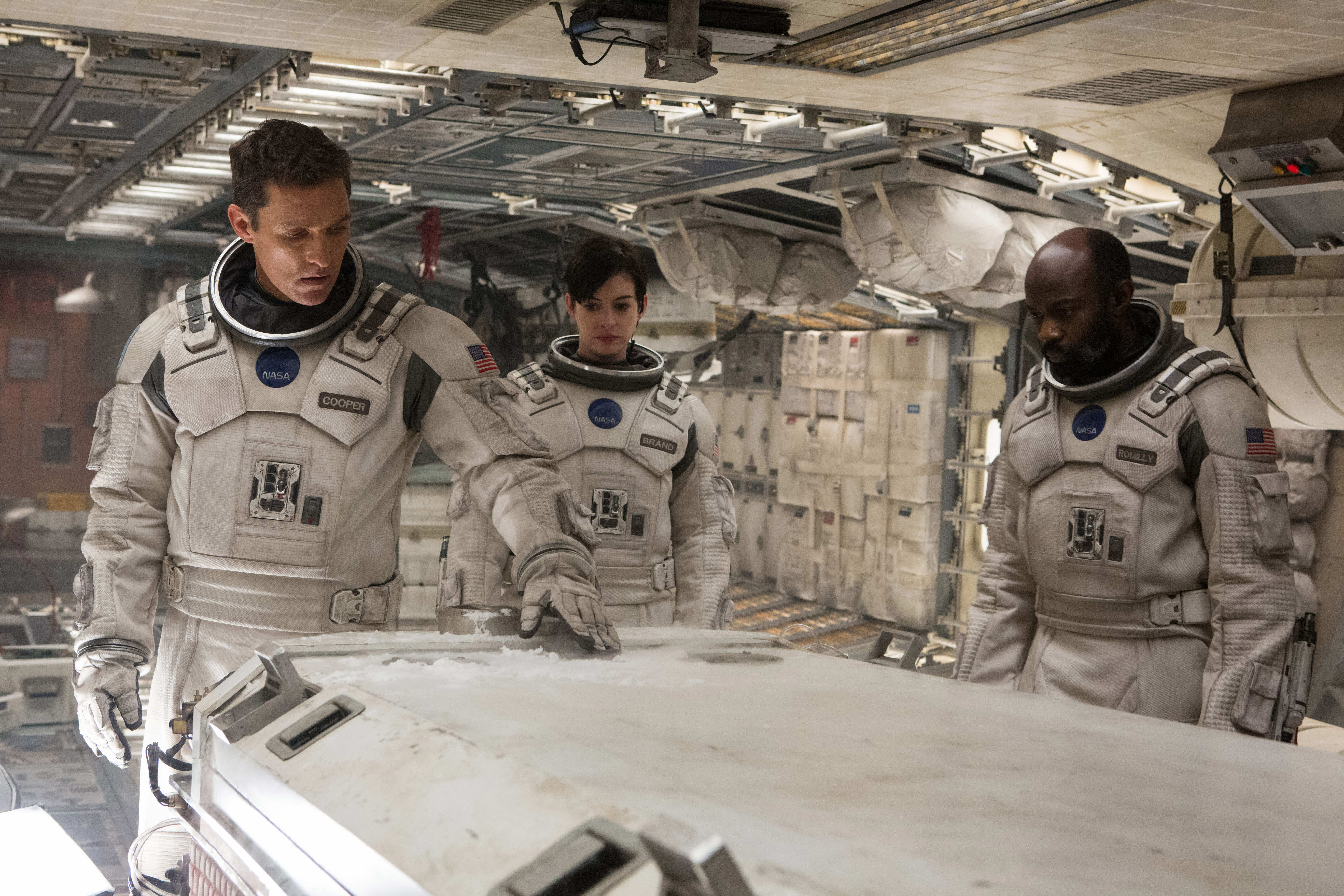 She brings the right amount of restraint and spunk to the character that makes her the most endearing element of the entire cast. Her absence in the second half of the film feels pronounced after a capably somber Jessica Chastain steps in as an older Murph after one of the film’s genuinely emotional plot twists creates a powerful leap in time for the space travelers.
She brings the right amount of restraint and spunk to the character that makes her the most endearing element of the entire cast. Her absence in the second half of the film feels pronounced after a capably somber Jessica Chastain steps in as an older Murph after one of the film’s genuinely emotional plot twists creates a powerful leap in time for the space travelers.
As for some of the other performers of note, Anne Hathaway plays Cooper’s foil Amelia, and though she is a wonderful actress, there is not enough substance in her role for Hathaway to pull out a dynamic enough performance to remember. She played a much meatier character in The Dark Knight Rises as Catwoman. Her acting chops are betrayed here by a mostly hollowly written character, which deflates a key speech for Amelia at the center of the film. Finally, as for McConaughey, the dude knows how to push the waterworks from his tear ducts, but sometimes he comes across mush-mouthed in his attempt to ground Cooper as the modest hero of the movie.
It’s not like the stakes are not heavy in this film. This space journey has both the human race at stake as well as the personal baggage of the astronauts. It’s just delivered with so much sentiment that it all feels rather strained. Some will roll their eyes, thinking, “enough already!” Others who love being spoon-fed emotional drama, will go along with this melodrama and have a cathartic cry. As for the film’s finale, I love mysticism in the movies, but the tonal inconsistency of so much astrophysical theory, 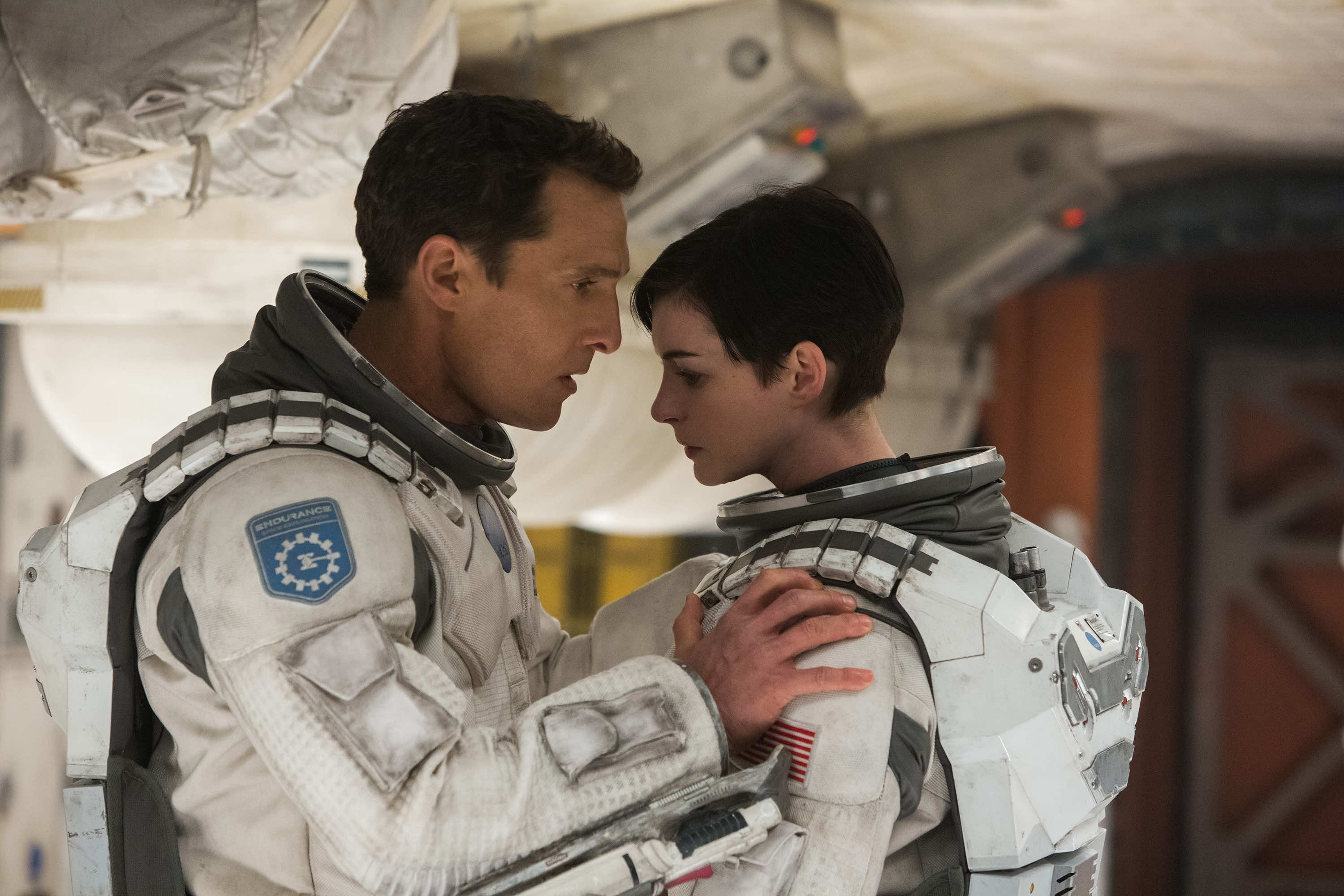 which is suddenly allowed to be subverted by another force that is grounded in a convenient kind of supernature makes it all hard to swallow. But if you can forgive Interstellar’s redundant sentimentality and a final act that will invariably disappoint anyone with some knowledge of theory and astrophysics, the movie’s still worth the price of admission. Those splurging for the IMAX experience will feel less ripped off than those waiting for a home video release, so take advantage. Much of what works in the film is purely visual and kinetic, and Nolan is at the top of his game at least in that sense.
which is suddenly allowed to be subverted by another force that is grounded in a convenient kind of supernature makes it all hard to swallow. But if you can forgive Interstellar’s redundant sentimentality and a final act that will invariably disappoint anyone with some knowledge of theory and astrophysics, the movie’s still worth the price of admission. Those splurging for the IMAX experience will feel less ripped off than those waiting for a home video release, so take advantage. Much of what works in the film is purely visual and kinetic, and Nolan is at the top of his game at least in that sense.
—
*Last year Gravity received the ire of popular astrophysicist Neil deGrasse Tyson for its slips in logic, but at least that film tried to seem realistic.
Interstellar runs 169 minutes and is rated PG-13 (there is some light cussing and some moments of terror and startling deaths). It’s in theaters at every multiplex in the U.S. today, including IMAX. Paramount Pictures invited us to a preview screening in IMAX for the purpose of this review.






